Some people get a thrill from roller coasters, while others find their adrenaline rush crossing bridges that seem to defy gravity itself. Suspension bridges have this unique ability to make even the bravest souls question their life choices midway across.
These engineering marvels dangle hundreds of feet above rushing rivers, deep gorges, or churning seas, held up by what often feels like little more than hope and some very strong cables. Here is a list of 20 suspension bridges around the world that will test every ounce of courage you thought you had.
Capilano Suspension Bridge, Vancouver
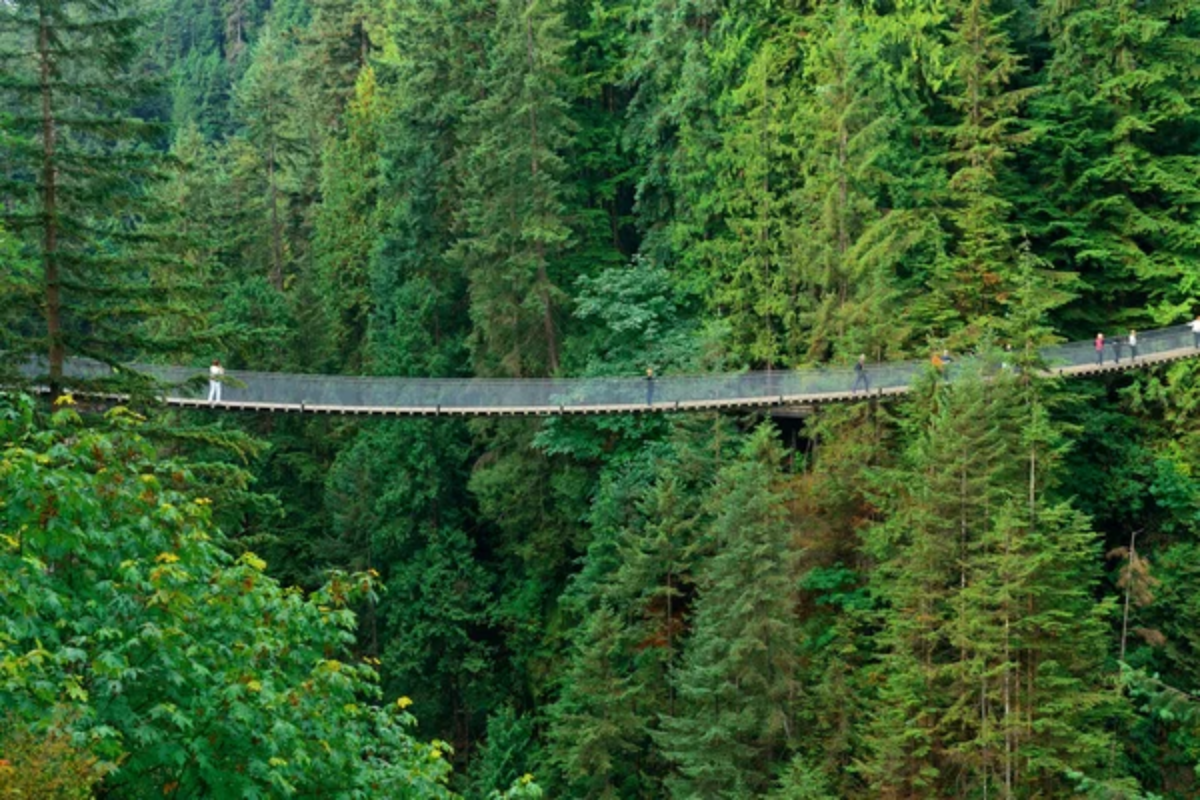
This 450-foot-long bridge sways 230 feet above the Capilano River, and it moves with every step you take. The original bridge was built in 1889 using hemp rope and cedar planks, though thankfully, today’s version uses slightly more reassuring materials.
What makes this bridge particularly nerve-wracking is how it bounces and wobbles as other visitors cross, creating a sensation that feels like walking on a very tall, very wobbly trampoline.
Carrick-a-Rede Rope Bridge, Northern Ireland

Fishermen originally built this bridge to reach a tiny island where they could catch migrating Atlantic salmon. The 65-foot span might sound manageable until you realize you’re walking 100 feet above jagged rocks and crashing waves.
The bridge connects to an island that’s only accessible by this single crossing, which means once you’re halfway across and panic sets in, your only options are forward or backward—there’s no escape route.
Like Travel Pug’s content? Follow us on MSN.
Zhangjiajie Glass Bridge, China
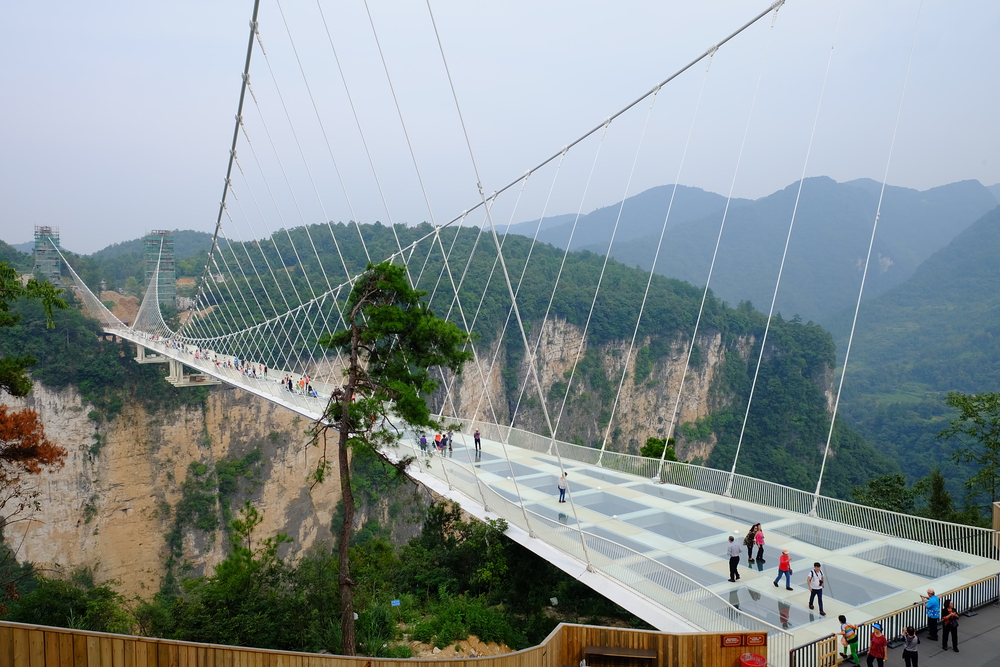
Walking 980 feet above a canyon floor—on glass—takes nerves of steel, especially when the bridge designers installed LED lights that create crack effects under your feet as a ‘fun’ feature. This bridge spans 1,410 feet and can hold 800 people at once, though many visitors find themselves crawling across on hands and knees.
The transparent floor panels offer an unobstructed view straight down to the valley below, which either thrills or terrifies, depending on your relationship with heights.
Mackinac Bridge, Michigan

The ‘Mighty Mac’ stretches 5 miles across the Straits of Mackinac, connecting Michigan’s two peninsulas through some seriously unpredictable weather. High winds can make the bridge deck sway noticeably, and during severe weather, authorities actually escort nervous drivers across in official vehicles.
The bridge towers rise 552 feet above the water, and the main span alone stretches 3,800 feet—that’s a lot of open space with nothing but water below.
Royal Gorge Bridge, Colorado
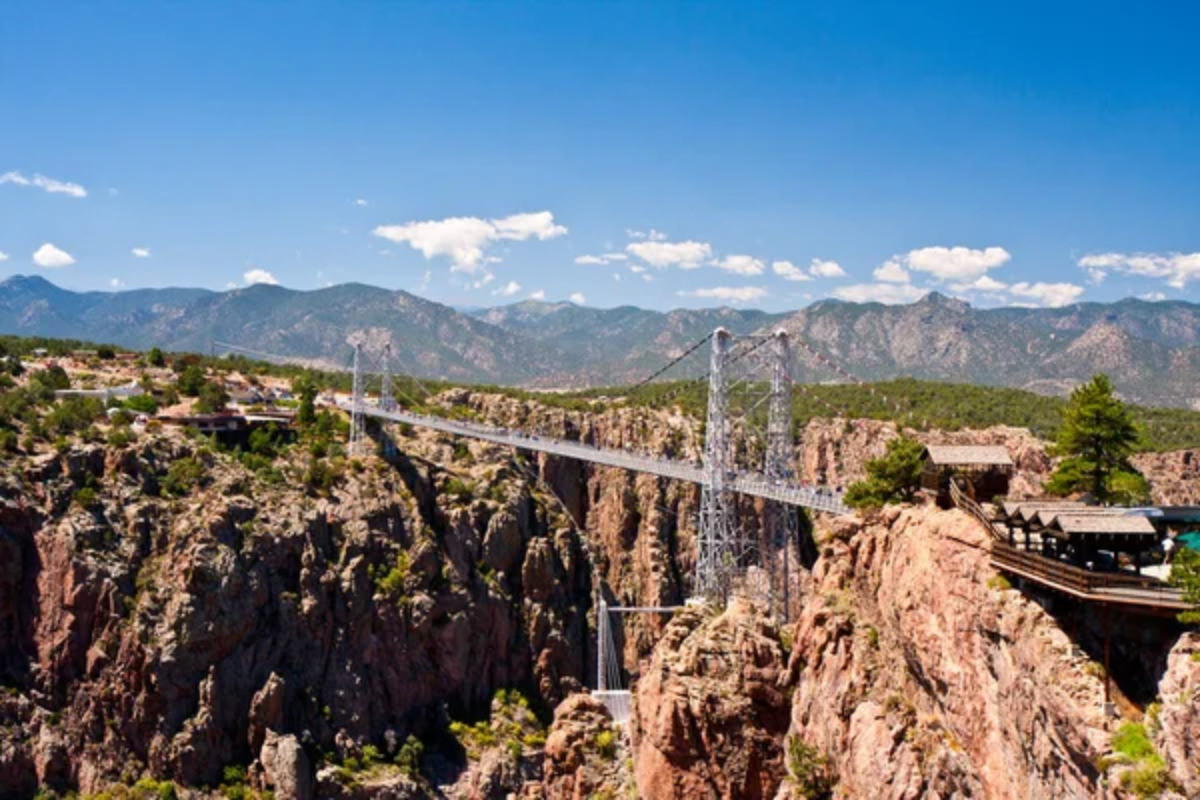
This bridge held the record as the world’s highest suspension bridge for 75 years, hanging 956 feet above the Arkansas River. The wooden planks beneath your feet are the only thing separating you from a nearly 1,000-foot drop into the gorge below.
What makes this crossing particularly intimidating is the narrowness of the bridge combined with its incredible height—it feels like walking across a tightrope stretched between two massive cliffs.
Like Travel Pug’s content? Follow us on MSN.
Langkawi Sky Bridge, Malaysia

Curved like a snake and suspended 330 feet above sea level, this bridge seems to float among the treetops of an ancient rainforest. The 410-foot walkway features sections with glass panels in the floor, giving you glimpses of the jungle canopy far below.
The bridge’s curved design means you can’t see the entire span from either end, creating an unsettling feeling that you’re walking into thin air.
Hussaini Hanging Bridge, Pakistan
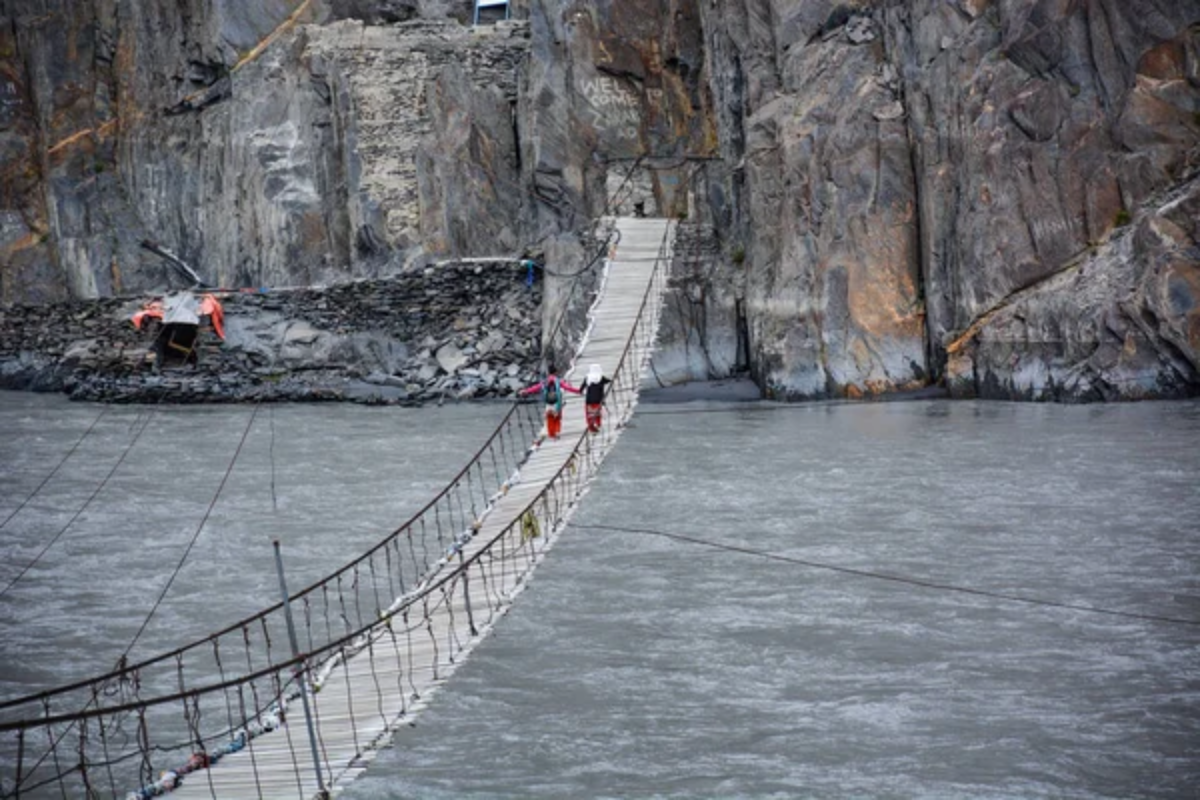
Often called one of the world’s most dangerous bridges, this crossing over the Hunza River features planks spaced apart and cables that have clearly seen better days. Several planks are missing entirely, and the remaining ones shift and creak ominously under your weight.
The bridge serves as a vital crossing for locals, but for visitors, it represents the ultimate test of courage versus common sense.
Trift Bridge, Switzerland
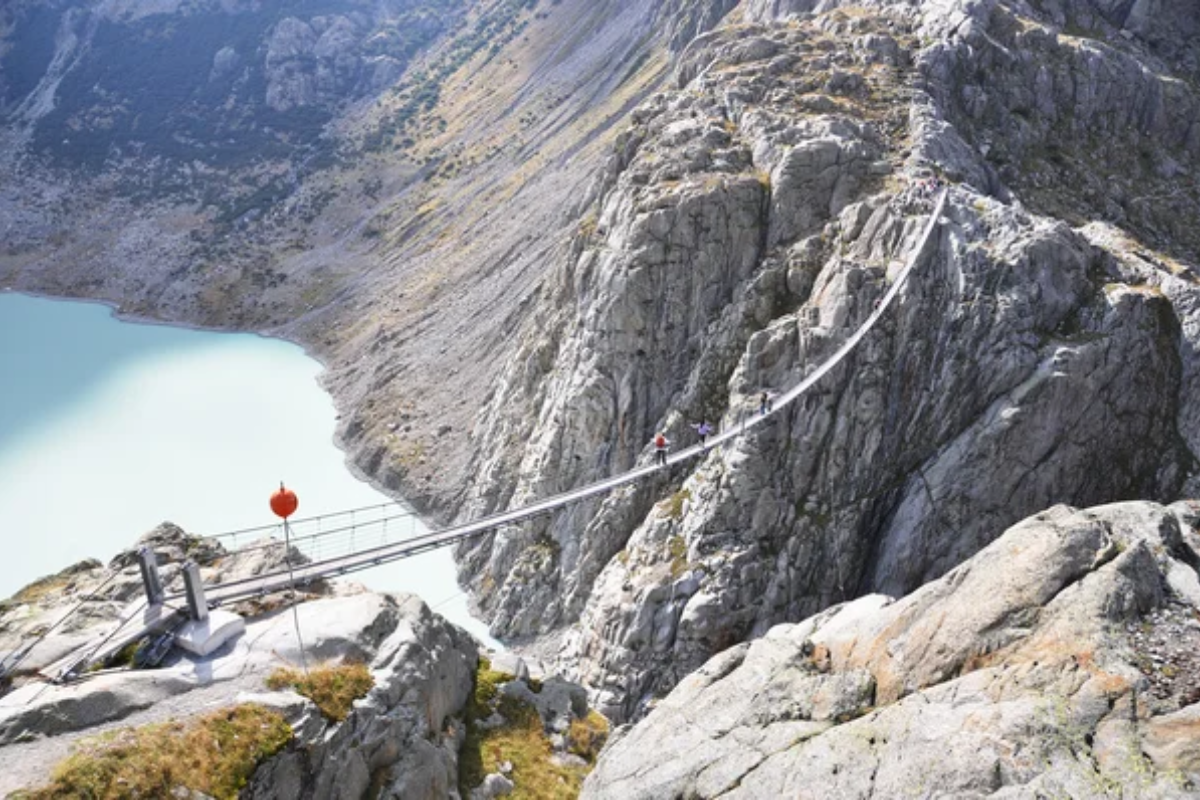
Suspended 558 feet above a glacier-fed lake, this bridge offers spectacular Alpine views for those brave enough to look up from their feet. The 560-foot span crosses a dramatic mountain valley where howling winds can make the bridge sway considerably.
What adds to the intimidation factor is the remote location—you have to hike for over an hour just to reach the bridge, knowing this terrifying crossing is your reward.
Like Travel Pug’s content? Follow us on MSN.
Brooklyn Bridge, New York
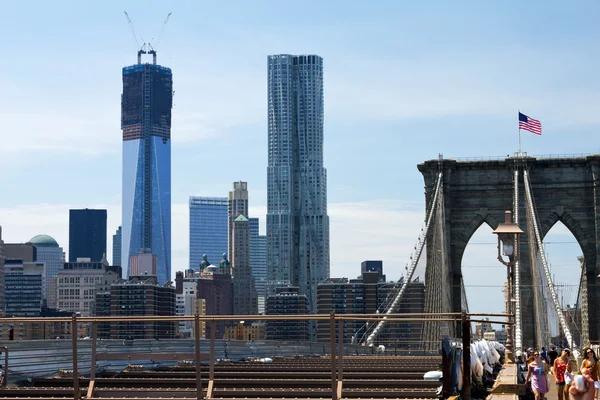
While not the highest or longest, the Brooklyn Bridge presents its unique challenges with heavy pedestrian traffic and strong winds off the East River. The wooden planks of the pedestrian walkway sit 135 feet above the water, with gaps between boards that offer glimpses of the river below.
The bridge’s 1883 construction means you’re trusting engineering from an era when calculators were people, not machines.
Aiguille du Midi Bridge, France
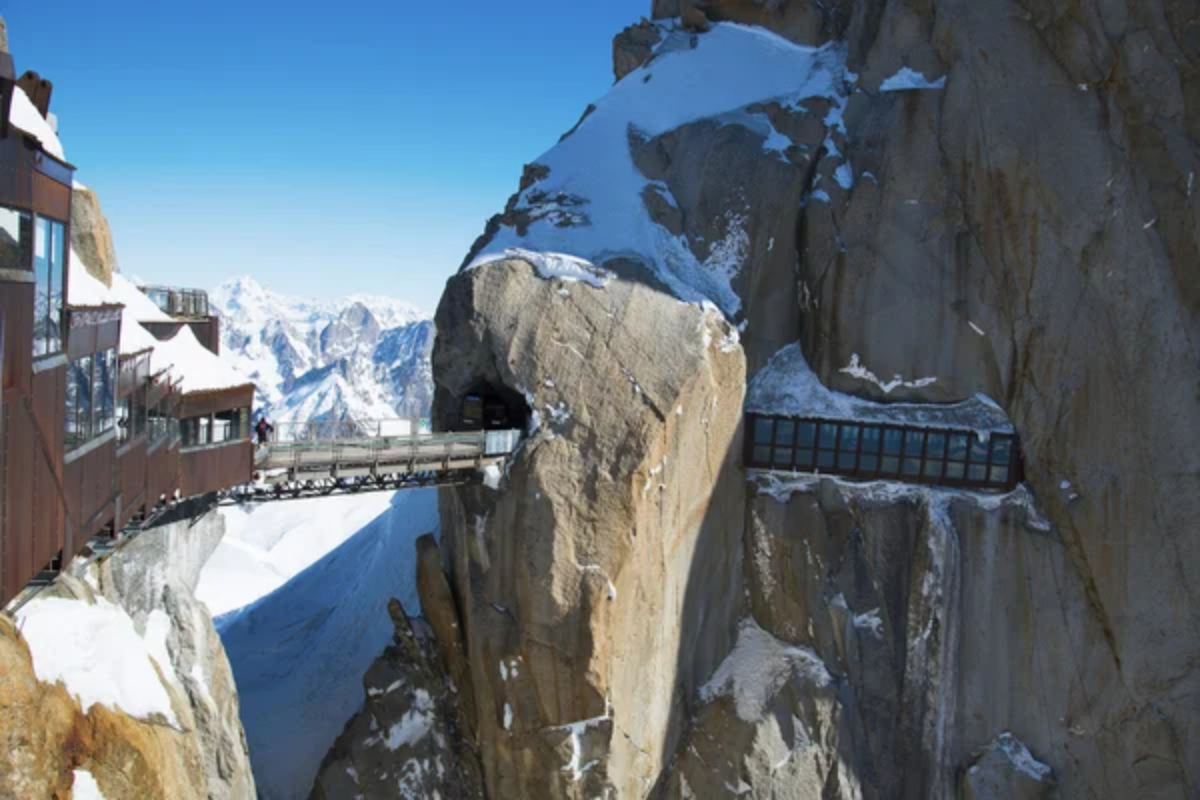
At an elevation of 12,605 feet in the French Alps, this bridge challenges visitors with both height and altitude sickness. The thin mountain air makes every step feel more labored, while the 15-foot span crosses a crevasse with a view that drops thousands of feet into the valley below.
The bridge connects two sections of the Aiguille du Midi peak, and strong Alpine winds can make the short crossing feel much longer than it actually is.
Golden Gate Bridge, San Francisco
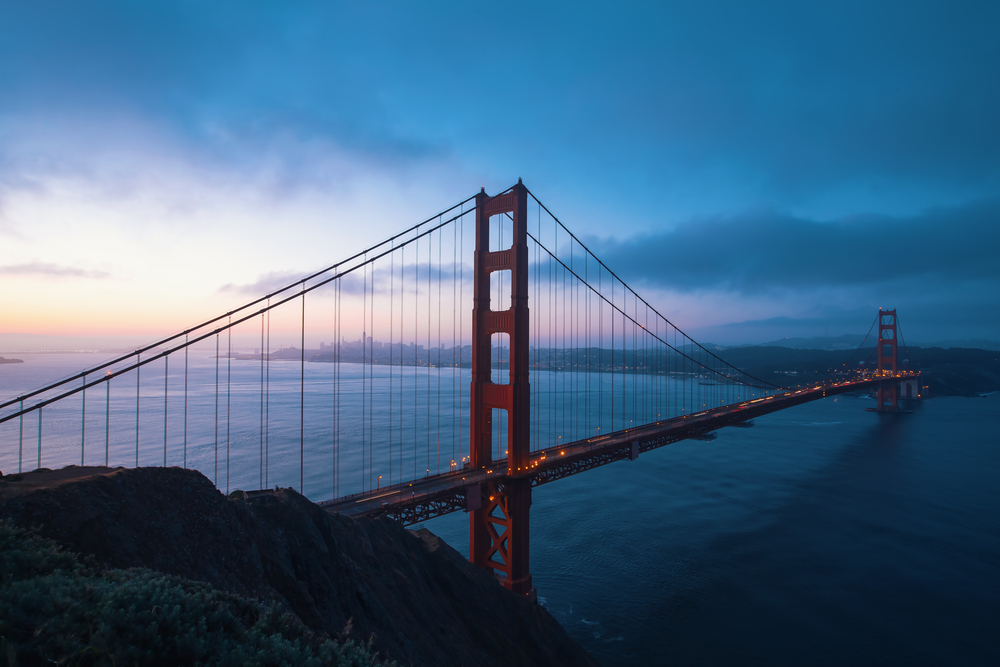
The Golden Gate’s 746-foot towers and 90-foot-wide deck handle massive wind loads that can reach over 100 mph during storms. The bridge’s famous International Orange color was chosen partly because it enhances visibility in San Francisco’s frequent fog, which can reduce visibility to just a few feet.
Walking across during windy conditions means feeling the entire 1.7-mile span flex and move beneath your feet like a massive steel serpent.
Like Travel Pug’s content? Follow us on MSN.
Millau Bridge, France

As the world’s tallest bridge, with one tower reaching 1,125 feet high, the Millau Bridge sits higher than the Eiffel Tower. The roadway itself hovers 885 feet above the Tarn River valley, creating an otherworldly experience of driving through the clouds.
Strong valley winds can buffet vehicles crossing the bridge, and the sheer scale makes you feel like an ant crawling across a giant’s construction project.
Confederation Bridge, Canada

This 8-mile crossing of the Northumberland Strait deals with some of the harshest marine conditions in North America, including ice floes that can reach 3 feet thick. The bridge rises 200 feet above the water to allow ship passage, but this height exposes it to fierce Atlantic winds that can exceed 80 mph.
During winter storms, ice can accumulate on the bridge structure, creating additional weight and changing wind patterns in unpredictable ways.
Chesapeake Bay Bridge, Maryland
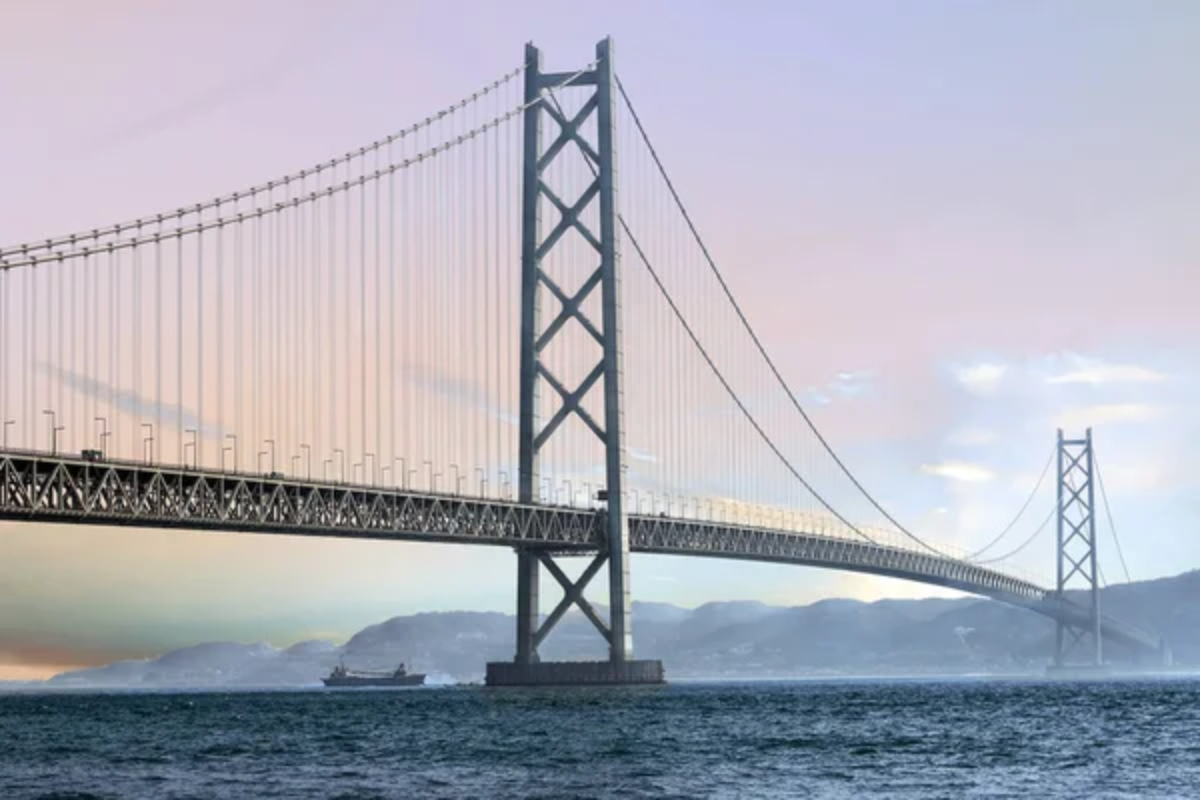
The 4.3-mile span combines significant height with notoriously windy conditions that have created a cottage industry of driving services for terrified motorists. The bridge rises 186 feet above the Chesapeake Bay, high enough that boats can pass underneath but tall enough to trigger serious anxiety in height-sensitive drivers.
Wind restrictions frequently close the bridge to motorcycles, RVs, and high-profile vehicles, giving you an idea of the conditions up there.
Like Travel Pug’s content? Follow us on MSN.
Akashi Kaikyo Bridge, Japan
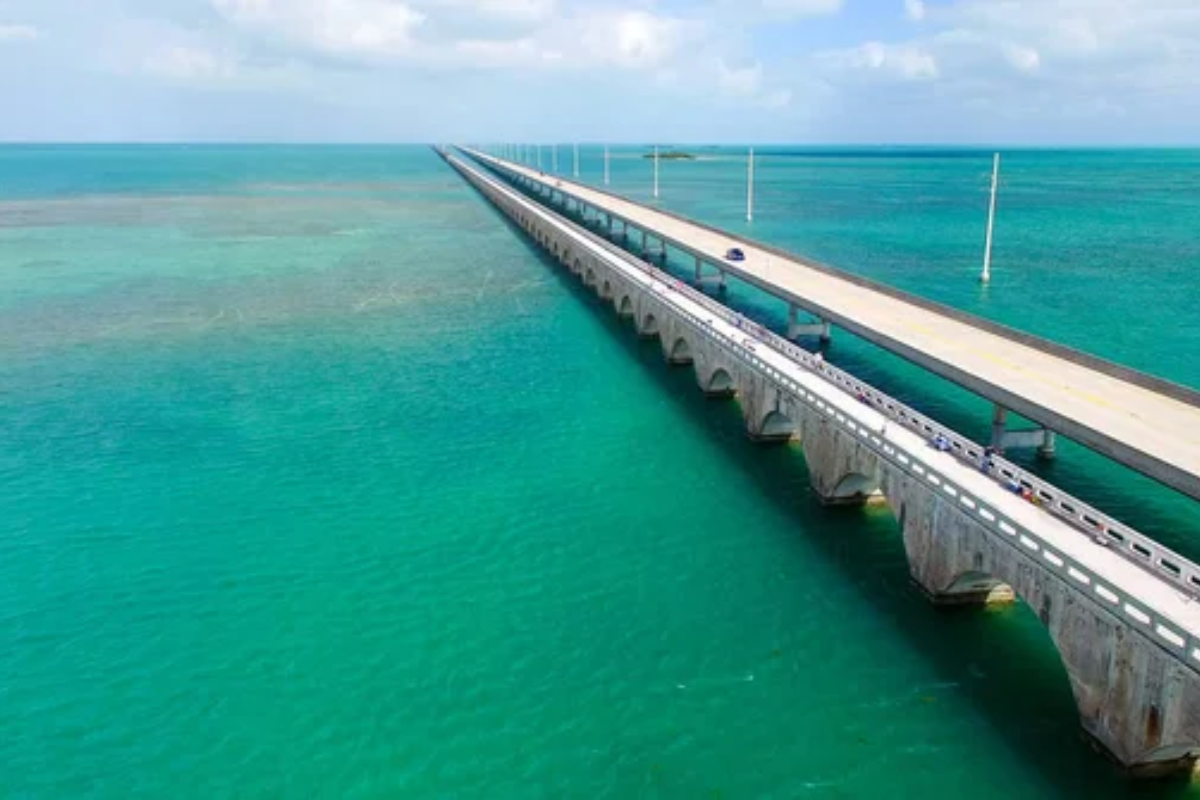
The world’s longest suspension bridge, at 12,831 feet, was built to withstand earthquakes, typhoons, and harsh marine conditions in one of Japan’s most challenging locations. The bridge’s main span alone stretches 6,532 feet—nearly 1.25 miles of open space supported by cables.
During construction, the 1995 Kobe earthquake actually moved the bridge towers apart by 3 feet, requiring engineers to make the span even longer than originally planned.
Seven Mile Bridge, Florida Keys

This bridge crosses some of the most beautiful yet intimidating waters in America, with 7 miles of open ocean on both sides and no land in sight for most of the crossing. The relatively low elevation of 65 feet means that during storms, waves can actually splash onto the roadway.
The bridge replaced an old railway bridge whose remains are still visible alongside, serving as a reminder of how challenging this crossing has always been.
Pont de Normandie, France
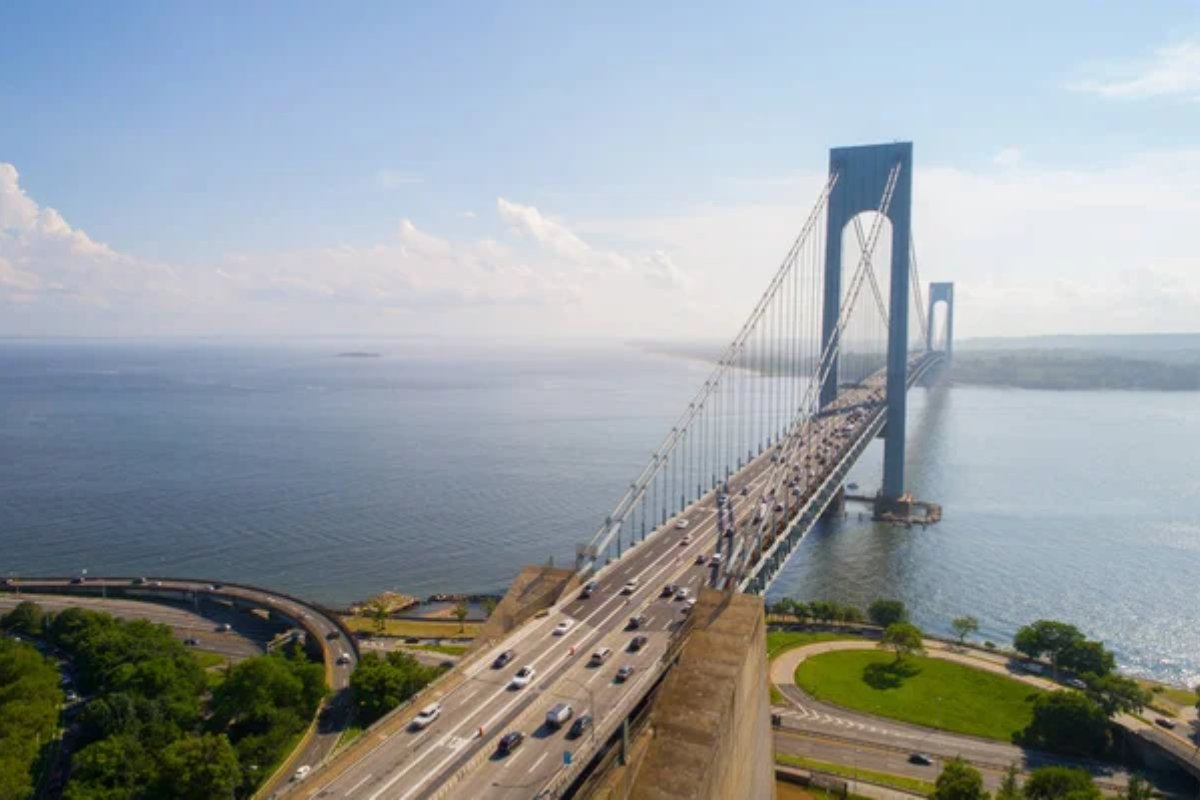
Spanning the Seine estuary with a main span of 2,808 feet, this bridge faces constant assault from Atlantic weather systems and strong river currents below. The bridge deck sits 184 feet above the water, high enough to feel every gust of wind coming off the English Channel.
The cable-stayed design creates a forest of cables that sing and whistle in the wind, creating an eerie soundtrack for your crossing.
Like Travel Pug’s content? Follow us on MSN.
Verrazano-Narrows Bridge, New York
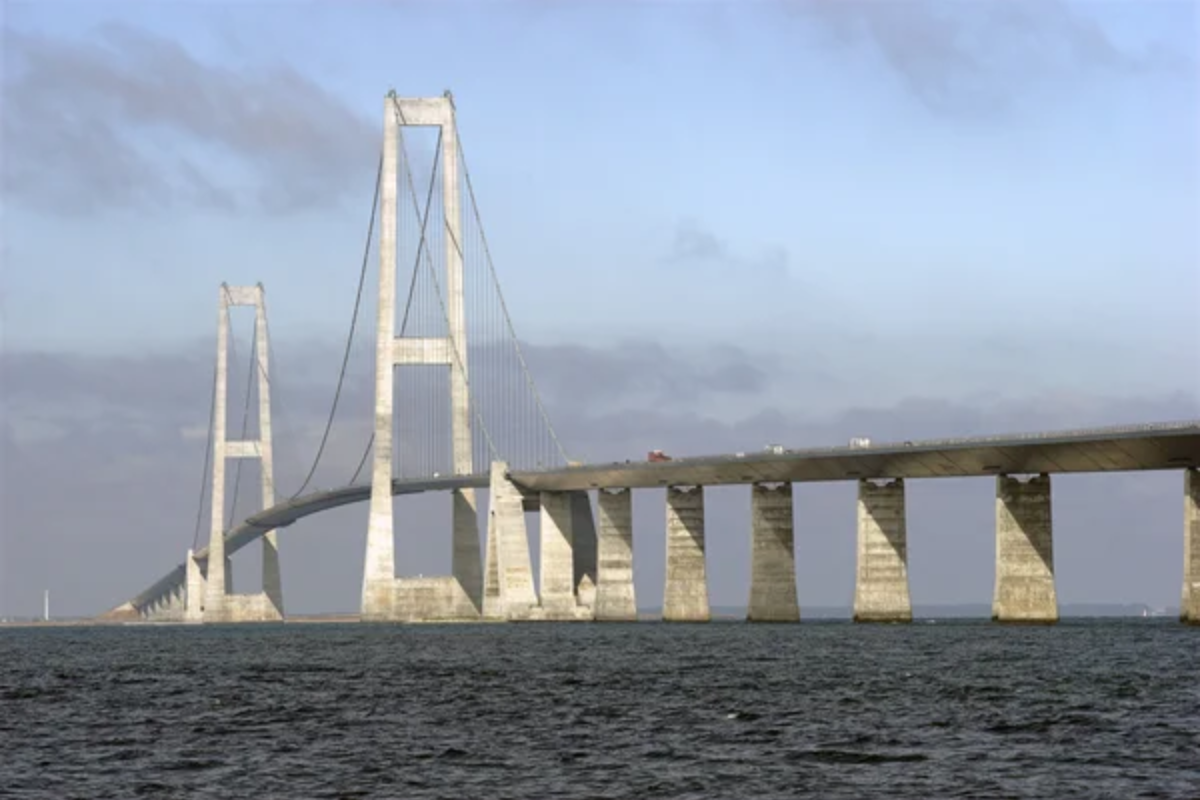
This bridge connecting Staten Island and Brooklyn faces some of the most challenging wind conditions on the East Coast, with gusts regularly exceeding 50 mph. The 4,260-foot main span makes it the longest suspension bridge in the Western Hemisphere, and its 693-foot towers sway up to 6 feet in high winds.
The bridge deck itself can move up to 12 feet from side to side during extreme weather events.
Great Belt Bridge, Denmark
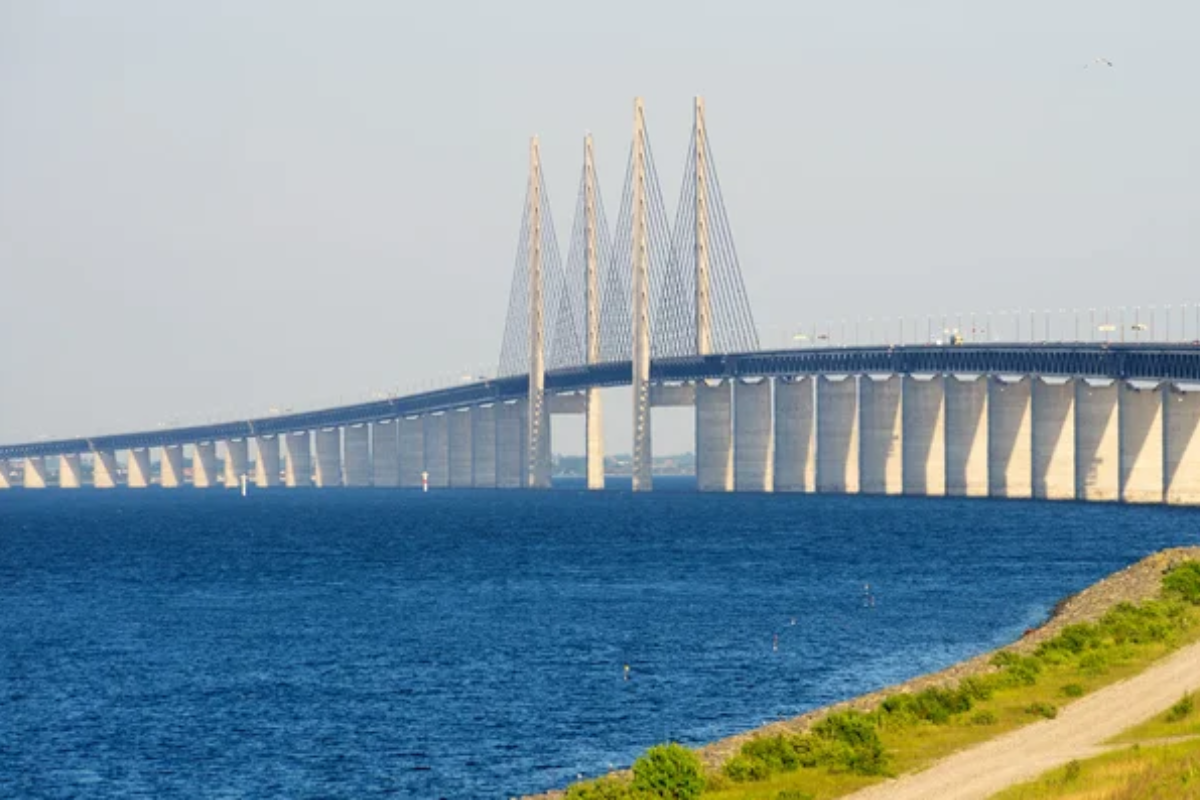
Crossing the Great Belt Strait between Danish islands, this bridge battles North Sea weather systems that can generate winds over 70 mph. The main span stretches 5,328 feet across waters known for sudden weather changes and rough seas.
The bridge’s height of 254 feet above the water means it catches the full force of weather systems moving across the relatively flat Danish landscape.
Öresund Bridge, Sweden-Denmark
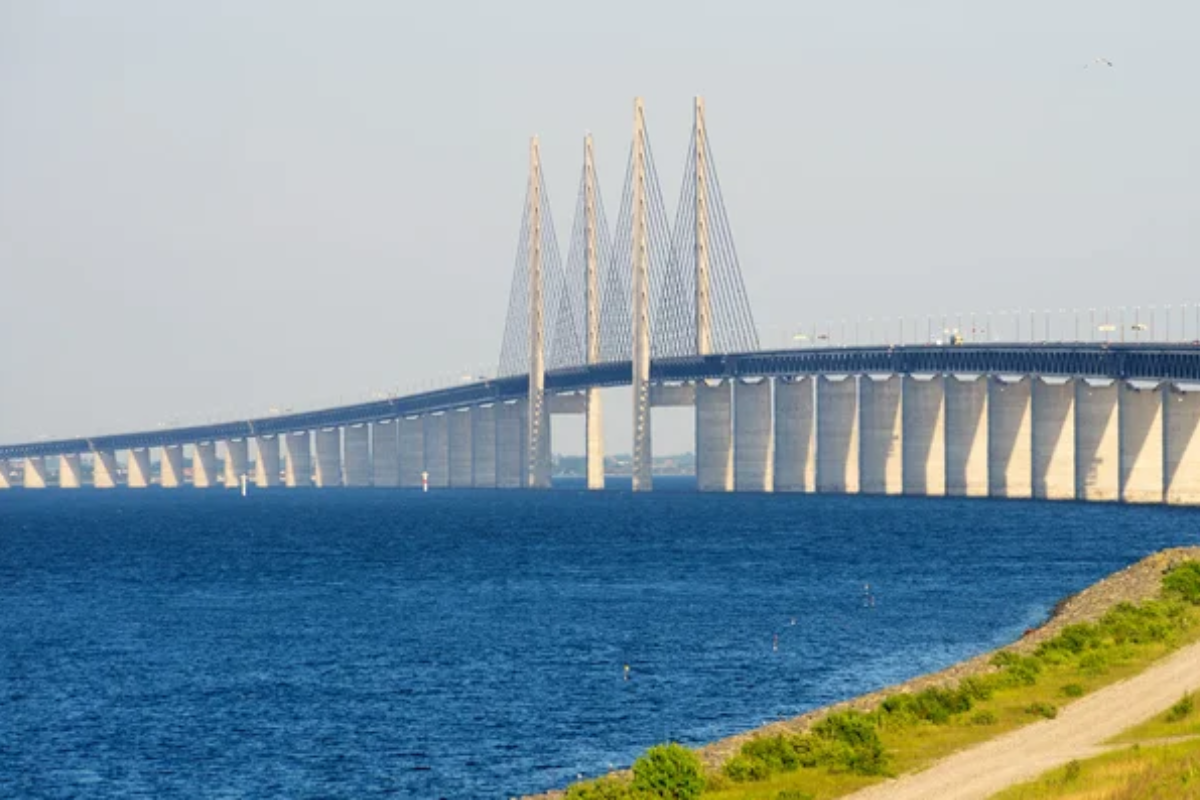
This 5-mile crossing connects two countries across the Øresund Strait, dealing with Baltic Sea conditions that include ice, high winds, and dense fog. The bridge transitions into a tunnel partway across, but the suspended portion rises 200 feet above the water to allow ship traffic.
Winter conditions can be particularly challenging, with ice accumulation and limited visibility creating white-knuckle driving conditions.
Like Travel Pug’s content? Follow us on MSN.
Where Fear Meets Engineering

These bridges represent humanity’s ongoing battle against geography, connecting places that nature seemingly never intended to be linked. Each crossing required engineers to overcome unique challenges—whether battling hurricane-force winds, earthquake zones, or simply the psychological terror of being suspended hundreds of feet above churning water.
Today’s computer-aided design and advanced materials make these spans safer than ever, yet they still trigger that primal fear of heights that reminds us we’re not meant to fly. The next time you’re gripping the steering wheel or handrail while crossing one of these engineering marvels, remember that your fear is perfectly rational—you’re doing something that should be impossible, held up by human ingenuity and a lot of very strong steel.
More from Travel Pug

- 20 Best Beach Towns in the Carolinas
- 13 Destinations Where Tourists Regularly Regret Their Trip
- 20 Destinations That Are More Magical Without an Itinerary
- 20 Underrated Adventures That Belong on Your Travel List
- 20 Cities Where You Should Just Wing It, No Planning Required
Like Travel Pug’s content? Follow us on MSN.N.
